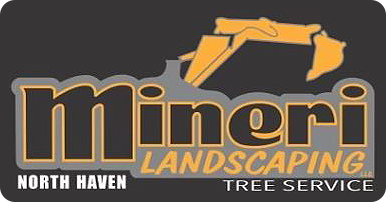FAQs
Mineri Landscaping LLC
Have a landscape or tree service-related question? We have the answer. Check out these FAQs and call or text us today for more information!
-
Are you licensed and insured?
Absolutely, we hold a full license issued by the State of Connecticut and maintain comprehensive insurance covering general liability and worker's compensation. We're more than willing to provide evidence of both at your convenience. Ensuring your safety and security is paramount to us.
-
How much will this cost?
The cost of tree removal can vary based on multiple factors such as the following and more:
- Tree size
- Location
- Health status
- Potential obstacles
To obtain a precise cost estimate, we recommend scheduling a complimentary assessment with no obligations. Request an estimate from us now and our team will visit your property, evaluate the tree, and provide you with a thorough estimate.
-
What happens to the wood and debris?
Our approach is adaptable, and we're eager to accommodate your needs! Whether you prefer the wood cut into firewood logs, the branches and smaller pieces chipped, or everything hauled away for disposal, we're here to tailor our services to your preferences. Simply reach out to us with your preference, and we'll make it happen.
-
How long will the process take?
The duration required for tree removal is subject to the size and intricacy of the task at hand. Nevertheless, we prioritize efficiency to mitigate any disturbance to your property. When you schedule your complimentary estimate, we'll provide you with a transparent estimation of the projected timeline for the project.
-
Do you have any references?
Of course! We hold our work in high esteem and boast numerous satisfied customers across Connecticut. We will provide you with a list of references, allowing you to hear firsthand about their experiences with our company.
-
Why should I remove a dead tree?
Removing a dead tree is imperative for several reasons:
- Safety Hazard: Dead trees become brittle and are susceptible to falling branches or collapsing entirely, posing substantial risks to individuals, property, and power lines.
- Pest Attraction: Dead trees serve as perfect habitats for wood-boring insects and other pests, potentially causing infestations that may spread to healthy trees or even infiltrate your home.
- Depreciated Aesthetics: A dead tree diminishes the visual appeal of your landscape and can depreciate property value.
- Property Damage: The roots of a dead tree might persist in growing and could potentially harm foundations, sidewalks, or underground utilities.
-
How much does stump grinding cost?
The price of stump grinding can fluctuate based on several key factors:
- Stump Size: The diameter of the stump plays a pivotal role in determining the overall cost of the grinding process. Larger stumps generally require more time and effort to grind down, consequently affecting the final price.
- Accessibility: The location and accessibility of the stump significantly impact the ease of access to the grinding equipment. Stumps situated in confined spaces, obstructed by nearby structures, or surrounded by landscaping features can pose challenges, potentially increasing the complexity of the job and thus the cost.
- Root System: The complexity of the stump's root system can also influence the grinding process. Stumps with extensive and intertwined root networks may necessitate additional time and specialized equipment to ensure thorough removal, potentially affecting the overall price.
-
What's the best time of year for tree removal?
Tree removal is a task that can technically be performed at any time of the year, but certain seasons offer advantages that can streamline the process and minimize potential disruptions to your property.
- Winter: The dormant period of trees during winter presents favorable conditions for removal. With foliage absent, it becomes easier to identify branches and assess potential hazards, enhancing safety during the removal process. Additionally, frozen ground can provide added stability, reducing the likelihood of damage to your landscape from heavy equipment and minimizing disturbances to the surrounding area.
- Early Spring: Undertaking tree removal in the early spring, before leaves begin to emerge, can offer several benefits. Without the presence of foliage, the process of removal becomes slightly faster and more straightforward, as there are fewer obstructions to contend with. Moreover, scheduling removal before the trees enter their active growth phase can help mitigate the risk of any budding branches interfering with the process.
By considering the unique advantages of each season, you can strategically plan tree removal to ensure optimal results while minimizing any potential impact on your property and surrounding environment. Call or text us today to learn more.
serving Area
New Haven County, CT
and surrounding areas
Business Hours
- Mon - Fri
- -
- Sat - Sun
- Closed
24/7 Emergency Services Available



Share On: